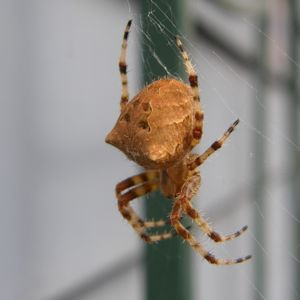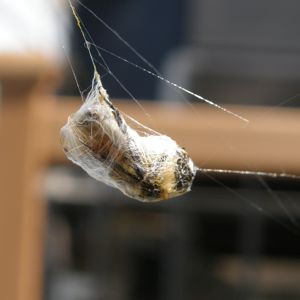Have you ever spotted a large, orange spider with an intricate web in your garden and wondered if it’s a friend or foe? Many gardeners encounter these impressive arachnids and question their presence. The spider you’re likely seeing is the cat-faced spider, a fascinating and beneficial creature to have around.
 cat-faced_spider2.jpg
cat-faced_spider2.jpg
These spiders, scientifically known as Araneus gemmoides, are a type of orb weaver spider, named for the elaborate, circular webs they construct. The “Cat Face” descriptor comes from the distinctive markings and projections on the female spider’s abdomen, which, with a bit of imagination, resemble the ears and face of a cat. These spiders are most noticeable in late summer and fall when they reach their largest size, sometimes growing as big as a quarter.
Cat-faced spiders are indeed “good guys” in the garden. They are voracious predators of insects, playing a crucial role in natural pest control. As Colorado State University entomologist Whitney Cranshaw notes, these spiders often build their webs near lights and in building corners, prime locations to intercept flying insects drawn to these areas. While they are formidable hunters for garden pests, they are completely harmless to humans. You don’t need to worry about cat-faced spider bites; they are not aggressive and their venom is not considered medically significant to people.
While primarily insectivores, cat-faced spiders are not picky eaters. They will prey on a variety of insects that might frequent your garden. One gardener’s experience illustrates this point vividly, observing a cat-faced spider catching honeybees in its web.
 bee_mummy.jpg
bee_mummy.jpg
The observer noted, “My husband was immediately dazzled by this spider and took pictures of everything she did. He was the one to first notice that she was catching one of my favorite garden helpers, honeybees. He called me over, and sure enough, a honeybee was wrapped up like a little mummy in the web.” This anecdote highlights the spider’s effectiveness as a predator, even capturing beneficial insects alongside garden pests.
Cat-faced spiders have a relatively short lifespan of just one season. As temperatures begin to drop towards freezing, these spiders will die. However, before they perish, the females will lay egg sacs, ensuring the next generation of cat-faced spiders will emerge in the spring. This seasonal life cycle means you can expect to see these garden helpers return year after year.
In conclusion, the cat-faced spider is a fascinating and beneficial resident of the garden. Their impressive webs and distinctive “cat face” markings make them easily recognizable. More importantly, their role as natural pest controllers makes them a welcome guest in any garden. While they may occasionally catch a bee or other beneficial insect, their overall contribution to keeping pest populations in check is a significant advantage for gardeners. So, the next time you see a cat-faced spider, appreciate it as a natural ally in maintaining a healthy and thriving garden ecosystem.
References:
- Spiders in the Home: http://www.ext.colostate.edu/pubs/insect/05512.html
- Cat-face Spiders: http://www.spiderzrule.com/catface.htm
